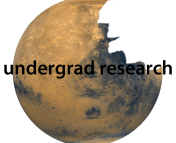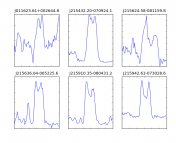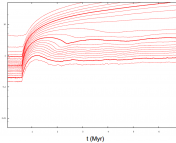 Hi all, and welcome to the return of the undergrad research posts! For those who don’t remember this series: this is where we feature the research that you’re doing. If you’ve missed the previous installments, you can find them under the “Undergraduate Research” category here.
Hi all, and welcome to the return of the undergrad research posts! For those who don’t remember this series: this is where we feature the research that you’re doing. If you’ve missed the previous installments, you can find them under the “Undergraduate Research” category here.
What does this series mean for you? We want to hear from you! Whether you’ve done an REU project, you’re working on your senior thesis, or you’ve recently started a research project in between homework sets — if you’re an undergrad doing research, we’d love to hear about it.
You can share what you’re doing by clicking on the “Your Research” tab above (or by clicking here) and using the form provided to submit a brief (fewer than 200 words) write-up of your work. The target audience is one familiar with astrophysics but not necessarily your specific subfield, so write clearly and try to avoid jargon. Feel free to also include either a visual regarding your research or else a photo of yourself!
We look forward to hearing from you!
************
Halston Lim and Jason Liang
Halston and Jason did this work jointly at the North Carolina School of Science and Mathematics.
Neutrinos, fundamental particles of the Standard Model of particle physics, can provide unique information about the internal processes of opaque high-energy astrophysical events. The ability of neutrinos to travel vast distances through matter is a crucial advantage of neutrino astronomy over optical astronomy. We demonstrated how neutrinos can be used to study the properties of failed supernovae (fSN) and black hole-neutron star mergers (BHNSM), thus providing a valuable contribution to neutrino astronomy. fSN neutrino detection would result in the first observation of black hole formation, while neutrinos from BHNSM could be used to determine if BHNSM are progenitors of short-period gamma-ray bursts, some of the most energetic events in the universe. By calculating the observed neutrino signal in various current and proposed detectors, we determined the detectability of fSN and BHNSM and demonstrated how the observed neutrino signal can provide information about the temperature and average energy of the neutrinos at the source. We also showed how these emission characteristics can then provide further information about the production of heavy metals in fSN and BHNSM. Our results confirm that neutrino observations of galactic fSN and BHNSM are feasible and provide fundamental groundwork for future research on fSN and BHNSM.
Andrew Emerick
Andrew is a graduating senior at the University of Minnesota. He worked on this project for his Honors thesis under Dr. Tom Jones and Dr. David Porter, using the resources of the Minnesota Supercomputing Institute. Andrew will be entering graduate school this fall at Columbia University, pursuing a doctorate in Astronomy with an intended focus in computational astrophysics.
Galaxy clusters are the largest gravitationally bound objects in the Universe, containing hundreds to thousands of individual galaxies. A majority of the baryonic matter in a cluster is contained within the intracluster medium (ICM): a hot, diffuse plasma that is interspersed throughout the galaxy cluster. The ICM is host to many phenomena, some of which can be used as key diagnostics, such as its often strong X-ray and radio emission. By studying the radio emission, we know that the ICM contains weak, cluster wide magnetic fields, but we do not understand well where they came from, or how they grew to the strength that is observed. One means to study the problem is to simulate the detailed microphysics of the interactions between the magnetic field and the “weather” of the ICM. We study the evolution of a weak, non-uniform magnetic field in a turbulent plasma, focusing on the details as to how turbulence amplifies a magnetic field. We focus primarily on the early evolution, and concern ourselves with how various magnetic field conditions can affect how the magnetic field grows over time, while fixing the nature of the turbulence. This study provides insight which can improve the accuracy of cosmological scale models of galaxy clusters. In addition, we know at some point information of the magnetic field conditions will be erased in the course of the ICM’s evolution. This study serves to help pinpoint exactly when that occurs, and thus if it could be possible to extract that information from potential observations.
************
Many thanks to Halston, Jason and Andrew, as well as everyone else who has recently submitted contributions! Look for more undergraduate research posts in the future — this series will continue once a month.




